Originally published at: From Speed Skating to Triathlon: A Look At the Innovative Cádomotus 4E Aero Cycling Shoe - Slowtwitch News

Photo: Kevin Mackinnon
Founded in 2006 by Diederik Hol, Cádomotus began as a company focused on speed and inline skates. Hol developed a special “clap” skate design while studying industrial design at the Delft Technical University in the Netherlands during the 90s, and he used that knowledge to develop his own brand of skates a little over a decade later.
Hol had long been an avid cyclist, so it wasn’t much of a stretch for him to branch out into cycling and triathlon – especially as global warming has decimated the outdoor skating world in the Netherlands. (Outdoor skating marathons, once incredibly popular in the Netherlands, have mostly moved indoors or to other countries.) By 2020 Cádomotus had its first cycling shoes on the market, and the company has been pushing hard over the last few years to make inroads into the triathlon market, with large booths at various IRONMAN and other major triathlon expos.
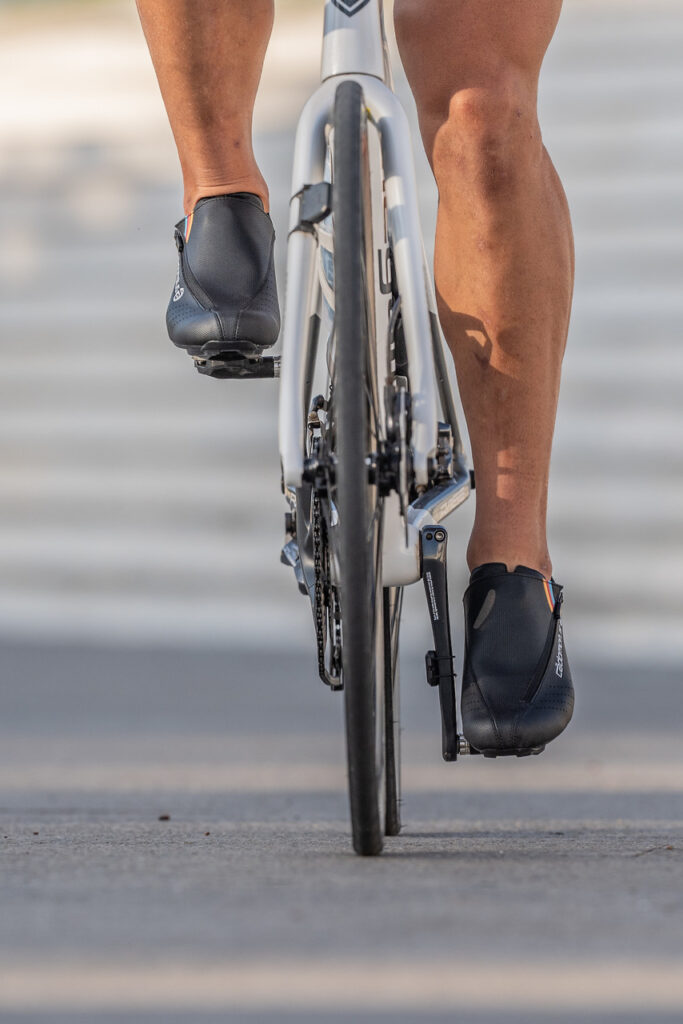
Photo: Cádomotus
Developing fast cycling shoes was an easy next-step for a company that specialized in high-end skates. Speed skates, like cycling shoes, need to be stiff enough to be able to transfer huge amounts of power – in one instance to a blade, in the other to the pedals. The other thing that Hol was bringing to the party was aerodynamic know how. We all know how much speed skaters care about aerodynamic performance – they were decked out in aerodynamic suits long before Greg Lemond won the Tour de France on a set of Boone Lennon’s Scott DH aerobars.
It’s not hard to see the speed skating roots of the Cádomotus triathlon cycling shoes. The unique design features a wraparound upper with a Boa closure system that allows you to literally dial in the perfect fit. Once you’ve done that, you zipper up the top flap to streamline the whole shoe. Cádomotus claims that the aerodynamic design of the flagship Aero model can save up to 10 watts.
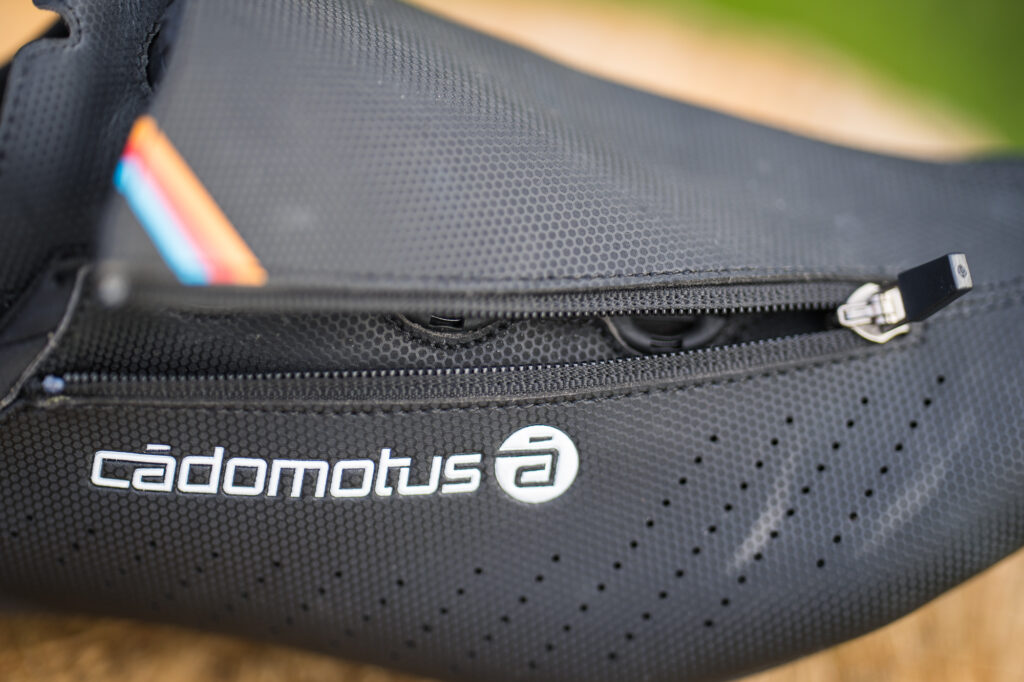
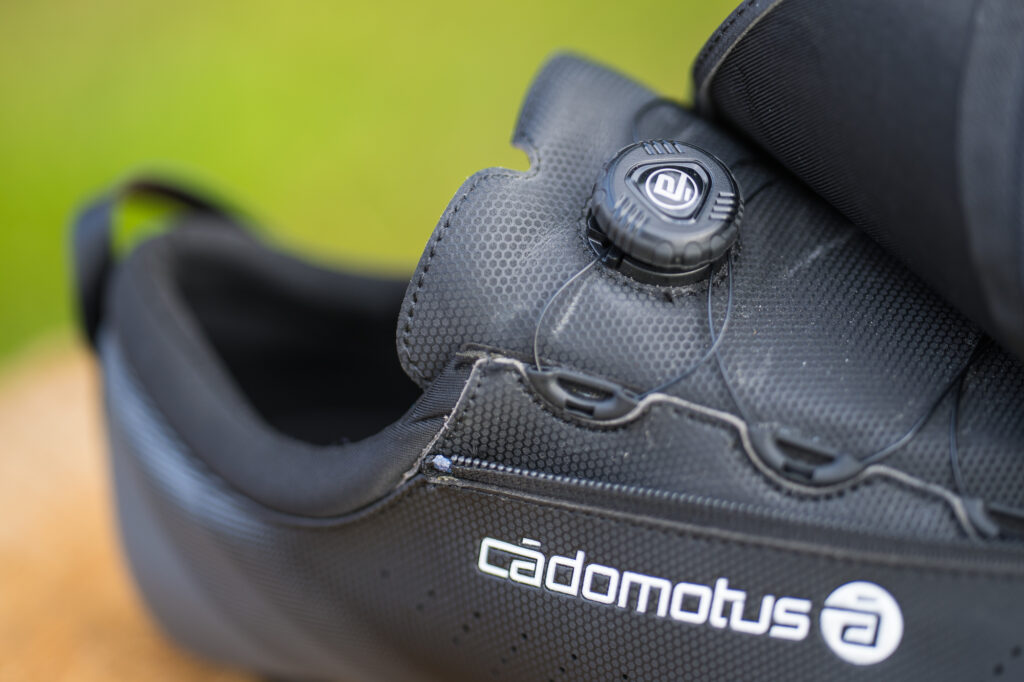
The aero design hides the Boa dial from the wind. Photos: Kevin Mackinnon
Which is no-doubt why you’ll see these on the feet of many pro triathletes looking for any edge they can find. The company’s website proudly lists some big names including former 70.3 world champ Rico Bogen, last weekend’s IRONMAN Arizona champ Menno Koolhaas, Justus Nieschlag and Marlene de Boer. We also noticed that American Ben Kanute was wearing the Cádomotus shoes on the bike at the IRONMAN 70.3 World Championship in Marbella the week before he took third in Arizona.
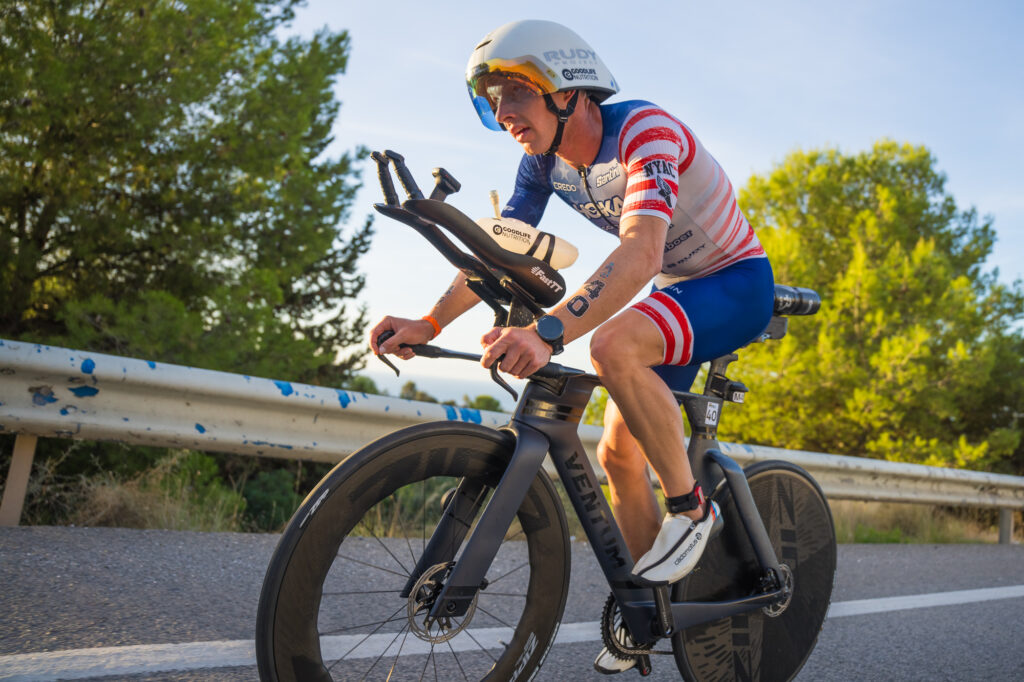
Ben Kanute on the bike in Marbella. Photo: Kevin Mackinnon
I met with Hol at one of those expos at Challenge Roth last summer, where he introduced me to his innovative shoes and sent me off with a pair to review. I had hoped to try out the flagship Chronos Aero shoe, but the sizing they had available didn’t quite match my foot, so Hol sent me off with the Chronos 4E. While the Aero features a heat-moldable carbon shell that wraps around your foot, the 4E has a more traditional carbon sole.
In the end I was really happy Hol sent me off with the 4E – I think it made more sense for me to review this model. The 4E is likely to be a much more popular Cádomotus model for most triathletes, retailing for 274 Euros versus the 471 Euros you will have to dish out for the Aero model, all while providing excellent comfort, support and performance. (I do still want to try the Chronos Bianco model with its Wahoo/ Speedplay direct mount, but that will have to wait!) While the Aero’s wrap-around carbon sole is said to provide decent power transfer even without being fastened (due to that snug-fitting heat-moldable carbon shell), reports are that they’re not as ventilated, which, as you’ll read below, was important for me based on where I was planning to test the shoes.
Comfort
While it’s tempting to begin with the aero benefits of the Cádomotus shoes first (they kind of look like aero booties, right?), I can’t help but start with the sheer comfort. The shoe somehow manages to provide excellent support without feeling particularly snug. I kept feeling like my foot should be moving around and wondering when I’d notice some loss of power as I pulled up and through the pedal stroke, especially while climbing, and it just never happened. I have really narrow feet, so I was really surprised that even though my foot never felt compressed, the shoe really did feel like it was wrapped around my foot, providing excellent support.
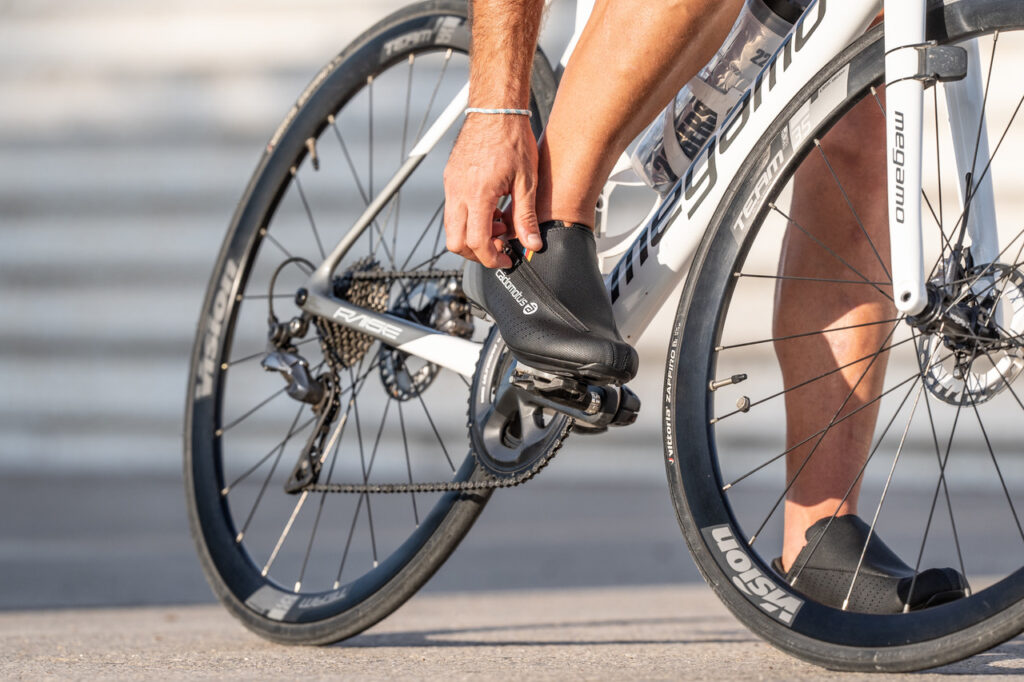
Photo: Cádomotus
The carbon sole is certainly extremely stiff, so you can push down on the pedals with confidence knowing that your effort is sending all the energy into moving you forward.
Ventilation
I felt certain that the shoes would end up feeling hot (remember that bootie comment?), and was prepared for that as I took them out for some hot summer rides here in Canada and even over to Kona for the IRONMAN World Championship. Somehow that just never happened. There’s excellent ventilation through a couple of strategically placed vents in that stiff carbon sole, and the upper is extremely breathable. I’ve even been pleasantly surprised to not feel like my feet are overheating during indoor rides.

(Please excuse my beaten-up cleats and the muddy terrain I walked through.)
While I haven’t put the 4Es through nearly enough indoor riding to get to this point, I have been told that one of the downsides to these shoes is that all the sweat that gets generated during indoor rides tends to rust the zipper long before you’re ready to replace the rest of the shoes.
Distance-Oriented
Cádomotus does market the 4E for long-distance racing, and that probably makes sense. Despite the heel strap at the back, they are not the easiest shoes to get on, tightened up and then zippered up while you’re moving. (Hence the attraction of that wraparound Aero model for those who just want to get their foot into the shoe and worry about doing things up once you’re moving.) The 4E is probably a better shoe for those doing longer distance races than for elite athletes competing in a sprint- or Olympic-distance event where those extra couple of seconds in transition are critical. That strap is easy to grab and pull up when you’re sitting down or standing still, so you can still get the shoe on in a hurry, which will be more than enough for most folks doing a long-distance tri.
Final Thoughts
If you’ve struggled to find a cycling shoe that remains comfortable for even the longest rides, the Cádomotus 4E is well worth the look. Comfort is the name of the game with this shoe, but you’re not giving up on performance in any way, shape or form.
I do wonder if the zipper and extra material to cover up the Boa dial and laces adds some weight – at 270 g the 4Es are heavier than, for example, Shimano’s TR9 (230 g). I’m really not sure if that added weight will make or break your decision, and you certainly have to factor in the aero properties of the Cádomotus shoes as an upside.
At this point, buying the shoes in some countries will be a bit more complicated as the Cádomotus warehouse is in Europe, so you might get dinged with import duty if you order them and get them delivered. American customers can now purchase Cádomotus products from Oomph Sports, so there is no international shipping or customs fees. More information can be found here.